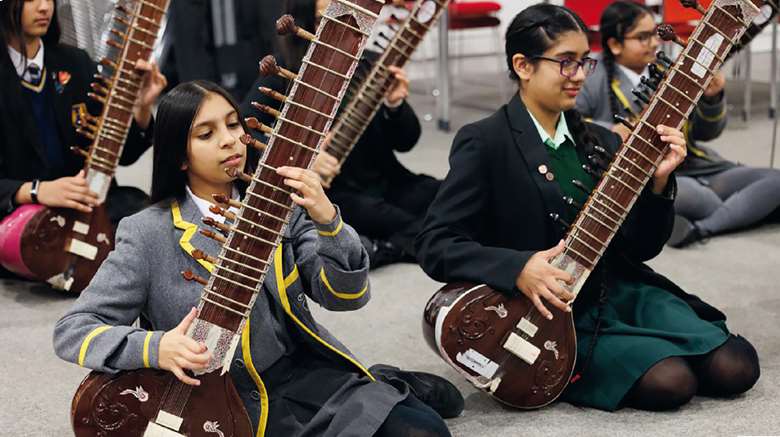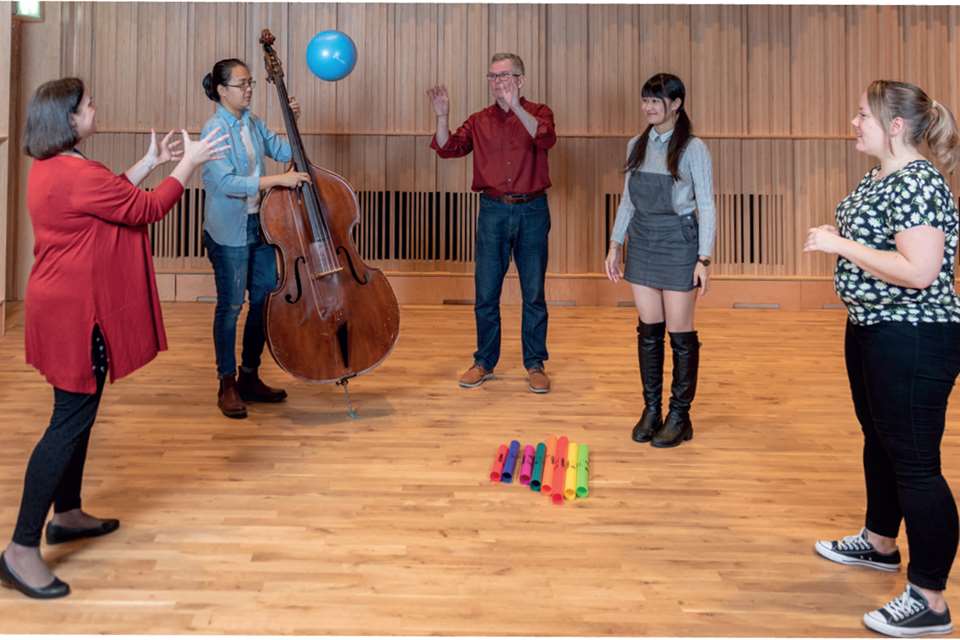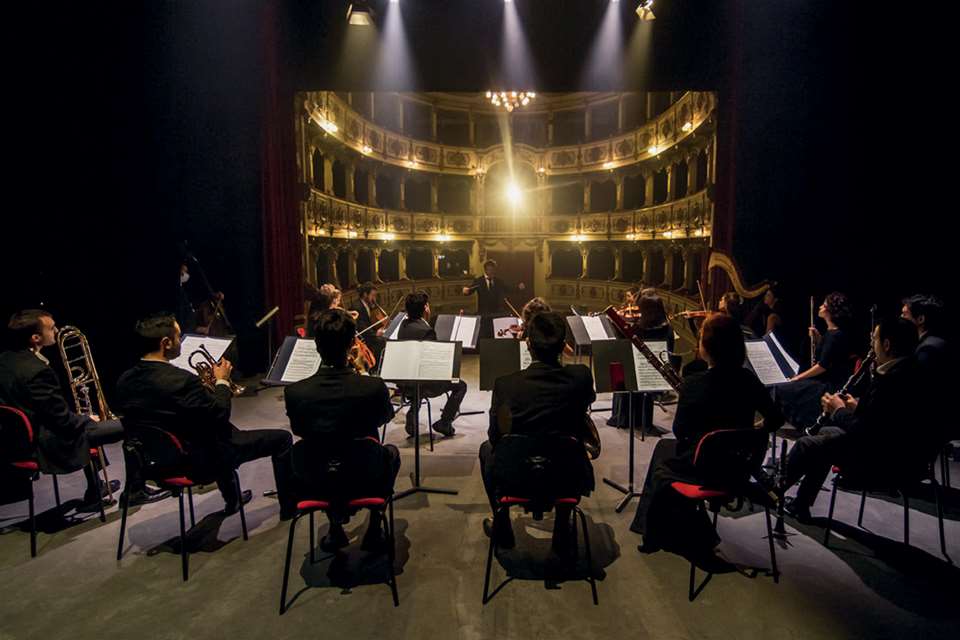Access and inclusion: cultural capital
Prof. Martin Fautley
Wednesday, July 19, 2023
Professor Martin Fautley of the Birmingham Music Education Research Group (at BCU) untangles what ‘cultural capital’ means to the various stakeholders.

Dave Warren / Picture Team
Back in 2021, Ofsted said they would be inspecting schools for how well they were providing pupils with cultural capital: ‘As part of making the judgement about the quality of education, inspectors will consider the extent to which schools are equipping pupils with the knowledge and cultural capital they need to succeed in life.’ (Ofsted, 2021)
This has created a bit of a problem for music teachers, as what Ofsted mean by the term ‘cultural capital’ and what others mean by this are not the same!
As Phil Beadle wryly observes: ‘What if the little that Ofsted knew about cultural capital was entirely wrong, confused with another concept, based on an utterly inadequate reading of the area…’ (Beadle, 2020 p.11)
At cross-purposes
So why is this such an issue? Well, what has happened is that some schools have confused cultural capital with what might loosely be called ‘high culture’; in other words, the highlights of the Western classical music canon (WCMC). Now, it is important to state at the outset that there is nothing at all wrong with WCMC. But we should acknowledge that this has become the subject of misunderstandings for some classroom music teachers and their leadership teams.
One possible source of the misunderstanding is the terminology. ‘Cultural capital’ is a concept originating in the works of the French sociologist Pierre Bourdieu, who uses it to describe the ‘capital’ (a bit like money) that has been ‘banked’ by children and young people as a result of their familial background and home culture, without having done very much actively to acquire it. However, Ofsted are using the term as something that is in the gift of teachers and schools to bestow on their pupils. In many ways, Ofsted's usage has become enmeshed with the American E. D. Hirsch's notion of Cultural Literacy (Hirsch, 1987), which is allegedly one of the schools minister Nick Gibb's favourite education books. But Hirsch's cultural literacy is about giving children a background in the cultural reference points they need to function in civilised society. For music education, this raises an old, much-debated issue, namely ‘What is music education for?’
Musicking v learning the canon
In England, at least, there is an uneasy tension between music as a practical activity – what others have called ‘musicking’ – and music lessons as induction into a cultural canon of what the National Curriculum refers to as ‘the works of the great composers and musicians’. Tensions arise from the disjunct of music as a practical activity and what used to be called ‘music appreciation’. If music is only about music appreciation, then what is the music to be appreciated? If music is only about musicking, then how does learning and progress in a wider field take place?
The skilled music teacher is able to balance both, of course, and introduce pupils to music they possibly have not heard before and do this by a course built on practical music-making activities; in other words, by pupils being active learners, and making their own musical meanings rather than as passive recipients of other people's opinions as to what is ‘great’ music.
Uneasy interface
This has significant impact on what we mean by access and inclusion in musical learning. These are matters which are impacted by a huge range of factors: social class, ethnicity, geographical location, familial attitudes and peer pressure, to name but a few. What we hope for are children and young people to be making music, and finding their own meanings in so doing. First-hand experience of using and manipulating musical materials in their own right – being musical, in other words – can be so much more impactful than simply sitting passively as music is played.
Now, of course, social media seems to be awash with music education self-styled experts, some of whom tell of how hearing one of the great classics (usually from an LP) made a huge difference to their lives. Well, yes, I am sure it did; but in this digital age just about any piece of music, from anytime, anywhere, is available at the push of a few electronic buttons. Being musical is an important counter to learning about music. Art history, after all, is a separate discipline from art-making. School music finds itself, in some cases, at the uneasy interface of history and practice.
Access and inclusion
Why this is an access and inclusion matter is because music is an art-form that exists in the making. To remove this aspect is to remove the life-blood from the subject. But music is a huge domain. To approach children and young people as though they are culturally lacking the high-status knowledge of the WCMC that the teacher possesses is to downplay the backgrounds of those very children, which can be extremely rich in other areas. One headteacher proudly told me: ‘We do proper music at this school – Haydn, Mozart and Beethoven.’ I've often wondered if a different headteacher might say: ‘We do proper music at this school – Charlie Parker, Miles Davies and Louis Armstrong.’ Is the latter (hypothetical) head bestowing a lower degree of cultural capital on their pupils than the former classical era one? Why are those 18th-century names more ‘proper’ than the 20th-century ones? As far as the children and young people are concerned, both are long past; but why is the head of that school proud to say they are doing ‘proper’ classical music?
As music educators, we want our children and young people to be doing music, and so why is music of cultural appropriateness not employed? After all, it is possible to gain excellence in all sorts of cultural traditions. I am always highly impressed by the great diversity of high-quality music making by young people I hear when I go to one of Birmingham's Services for Education concerts in Symphony Hall. I don't come away thinking I wish they had stuck to Haydn, Mozart and Beethoven; no, I am astounded by both the quality and diversity that I hear. This for me is a key issue: quality. When children and young people are involved in high-quality music-making that includes them, there is a palpable sense of achievement and of pride in their achievements. This has got to be a good thing, surely? And as Elizabeth Stafford noted in her recent Music Teacher article (June, 2023), it is not like classical music is ‘dying out’ in schools.
Being musical, progressive, inclusive
Cultural capital, conceived of and executed poorly, excludes; it does not include. It can do so by invidious means: this is not ‘my’ music, children and young people can think; this is the music of the headteacher, not of my family. We know that music appreciation classes can have this effect. Back in the 1960s, Enquiry 1 (Schools Council, 1968) was published. This was an investigation into school leavers’ attitudes. It observed that many of the students in schools at that time had become disaffected by music in schools – this was the time of music appreciation, remember. Students were asked to list school subjects that they found to be ‘boring’ and ‘useless’. Music came top of both lists.
No-one in music education wants to go back to those bad old days, but we need to be on our guard against the creeping causality of high culture as panacea. Society has moved on, times have changed, and there is much more music about. ‘Cultural capital’ should not be just about rectifying a deficit that may not be a lack at all. Good music lessons should be musical, progressive and inclusive. That is a big ask, but we owe it to our children and young people to step up and deliver, surely?
References
- Beadle, P. (2020) The Fascist Painting: What is Cultural Capital. John Catt Educational
- Hirsch, E. D. (1987) Cultural Literacy: What Every Literate American Needs to Know. Houghton Mifflin
- Ofsted (2021): uk/government/publications/school-inspection-handbook-eif/school-inspection-handbook
- Schools Council (1968) Enquiry 1: Young School Leavers. HMSO



